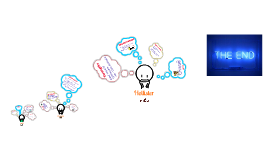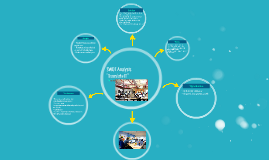SWOT ANALYSIS
Transcript: Swot Analysis SWOT stands for STRENGTH, WEAKNESS, OPPURTUNITIES and THREATS. SWOT analysis (alternately SWOT Matrix) is a structured planning method used to evaluate the Strengths, Weaknesses, Opportunities, and Threats involved in a project or in a business venture. A SWOT analysis can be carried out for a product, place or person. It involves specifying the objective of the business venture or project and identifying the internal and external factors that are favorable and unfavorable to achieve that objective. By analyzing your business or career in these 4 areas, you will be able to cut through the noise and focus on what really matters. STRENTHS Strengths pertains to the characteristics of the business, or project team that give it an advantage over others. When looking at your strengths, think about them in relation to your competitors. For example, if all of your competitors provide high quality products, then a high quality production process is not a strength in your organization's market, it's a necessity. WEAKNESSES Weaknesses are characteristics that place the team at a disadvantage relative to others Again, just like in STRENGTHS, you should consider this from an internal and external basis. OPPORTUNITIES Opportunities are external chances to improve performance (e.g. make greater profits) in the environment A useful approach when looking at opportunities is to look at your strengths and ask yourself whether these open up any opportunities. Alternatively, look at your weaknesses and ask yourself whether you could open up opportunities by eliminating them. Where your best opportunities lie? What interesting trends are you aware of? What opportunities may arise in changes of technology, government policy, social patterns and alike? What opportunities your STRENGTHS open up for you? THREATS Threats are external elements in the environment that could cause trouble for the business or project When looking at opportunities and threats, PEST Analysis can help to ensure that you don't overlook external factors, such as new government regulations, or technological changes in your industry. What obstacles do you face? What are your competitors doing? Are quality standards or specifications for your job, products or services changing? Is changing technology threatening your position? Do you have bad debt or cash-flow problems? Could any of your weaknesses seriously threaten your business? When you finish the analysis, you'll have a better understanding of how you can compete successfully. And you will have made a great start in crafting an effective strategy for success. The End. Group 5 BSLM - 3A NICOLAS CORDERO OTAKE ELEAZAR SALIGAO Key Questions: What advantages do you or your company have? What do you do better than anyone else? What unique or lowest-cost resources can you draw upon that others can't? What do people in your market see as your strength? What you could you improve? What should you avoid? What factors lose you sales? What are people in your market likely to see as weaknesses? Key Questions: Key Questions: Key Questions:

















